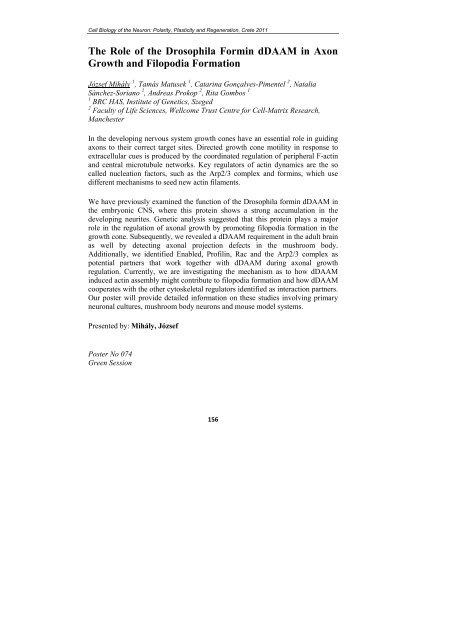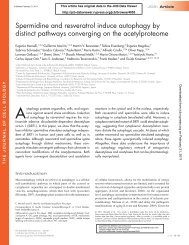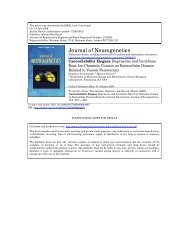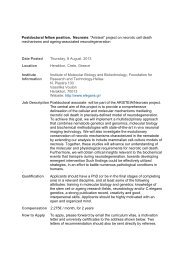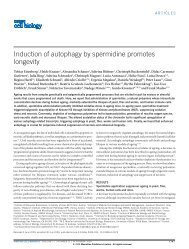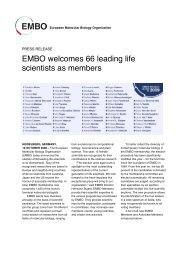CELL BIOLOGY OF THE NEURON Polarity ... - Tavernarakis Lab
CELL BIOLOGY OF THE NEURON Polarity ... - Tavernarakis Lab
CELL BIOLOGY OF THE NEURON Polarity ... - Tavernarakis Lab
Create successful ePaper yourself
Turn your PDF publications into a flip-book with our unique Google optimized e-Paper software.
Cell Biology of the Neuron: <strong>Polarity</strong>, Plasticity and Regeneration, Crete 2011<br />
The Role of the Drosophila Formin dDAAM in Axon<br />
Growth and Filopodia Formation<br />
József Mihály 1 , Tamás Matusek 1 , Catarina Gonçalves-Pimentel 2 , Natalia<br />
Sánchez-Soriano 2 , Andreas Prokop 2 , Rita Gombos 1<br />
1<br />
BRC HAS, Institute of Genetics, Szeged<br />
2<br />
Faculty of Life Sciences, Wellcome Trust Centre for Cell-Matrix Research,<br />
Manchester<br />
In the developing nervous system growth cones have an essential role in guiding<br />
axons to their correct target sites. Directed growth cone motility in response to<br />
extracellular cues is produced by the coordinated regulation of peripheral F-actin<br />
and central microtubule networks. Key regulators of actin dynamics are the so<br />
called nucleation factors, such as the Arp2/3 complex and formins, which use<br />
different mechanisms to seed new actin filaments.<br />
We have previously examined the function of the Drosophila formin dDAAM in<br />
the embryonic CNS, where this protein shows a strong accumulation in the<br />
developing neurites. Genetic analysis suggested that this protein plays a major<br />
role in the regulation of axonal growth by promoting filopodia formation in the<br />
growth cone. Subsequently, we revealed a dDAAM requirement in the adult brain<br />
as well by detecting axonal projection defects in the mushroom body.<br />
Additionally, we identified Enabled, Profilin, Rac and the Arp2/3 complex as<br />
potential partners that work together with dDAAM during axonal growth<br />
regulation. Currently, we are investigating the mechanism as to how dDAAM<br />
induced actin assembly might contribute to filopodia formation and how dDAAM<br />
cooperates with the other cytoskeletal regulators identified as interaction partners.<br />
Our poster will provide detailed information on these studies involving primary<br />
neuronal cultures, mushroom body neurons and mouse model systems.<br />
Presented by: Mihály, József<br />
Poster No 074<br />
Green Session<br />
156


